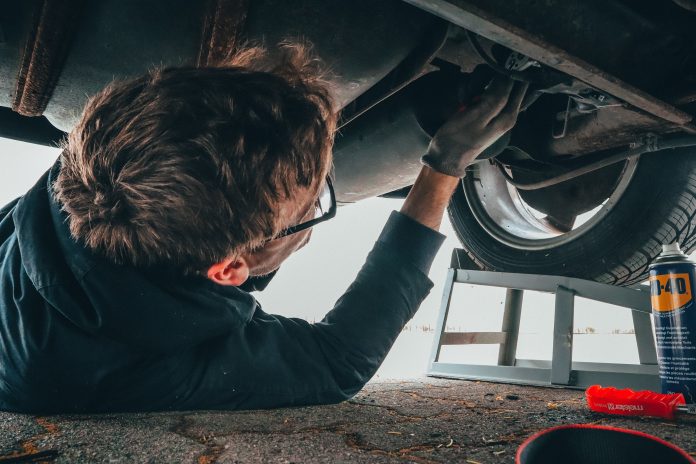
7 Tips to Help You Assess Your Service Department’s Best Practices
By Desiree Homer
As a dealership owner, you wear many hats in managing the various operations and revenue streams. You leverage every available resource to make sure you’re growing across each department. It can be a challenge as profit margins and strategies differ from those in sales, parts, finance, and service. You keep separate metrics, create varying guidelines for each, and even communicate differently with key members of staff.
In keeping with those differentiating best practices, though, do you find your departments are somewhat isolated from each other? Could you be molding a different, all-inclusive culture to foster an environment of revenue-generating synergy? If you could, would it impact your bottom line?
Some experts say yes.
Imagine you have a service customer who is met with top-notch customer service from your service manager. That customer spent $200 with you for their vehicle maintenance and repair. Your parts department was prepared for the job and had the necessary parts on hand. The customer experiences a one-stop, no-hassle service. It was convenient. This individual wasn’t transferred to a host of other departments, nor was he ever put on indefinite hold without answers. The service was scheduled according to his availability, and he encountered friendly and knowledgeable staff with each conversation. His needs were met and problems resolved.
Should that customer encounter a new problem, he will more than likely call your dealership first. What if that customer tells a friend about how convenient and friendly your service was or posted his experience on his social media page? Imagine over the next few months, that same customer is ready to trade in his car for a new one; he may even come to your dealership first or browse your inventory online before going anywhere else.
Because that customer had a great experience with your service department, he not only spent $200 in initial repairs, he also sent new referral business. His loyalty has transitioned from that of a service customer to that of a car buyer as well.
Customers Forgot About Loyalty
In the dealerships of yesterday, customers were loyal to those relationships built on the showroom floor or over the service counter. With the digital explosion of the mass media age, consumers began to operate and make purchase decisions differently. They were inundated with content and information on every screen and hounded with coupons and gimmicks to save a few bucks. Initially, people flocked to take advantage of those deals, often leaving their dealership relationships behind. The super sale, promo code discounts, and monthly deals were winning over the business. As dealerships scrambled to jump on this digital discount bandwagon, the emphasis shifted away from relationship-based service.
The Pendulum Swings Back to Relationships
Once consumers had experienced enough of the over-promise and under-deliver digital discounting, many began to search again for the service experience. They have grown wise to the bait and switch tactics of saving a few dollars on an oil change. As these customers come into the dealerships today, they want a trust-building relationship with convenience and transparency. People want to be able to take care of their repair and service needs with little disruption to their schedules or their wallets. The service managers are now responsible for shepherding those customers back into the dealership loyalty fold.
7 Tips to Assess Your Service Drive’s Loyalty Strategy
Are you greeting first-time customers with a proper introduction to your dealership?
In building a loyal relationship with your customers, it’s best to identify those who are new to your dealership altogether and treat them as first time guests. They deserve a proper introduction to your team and your department. In doing so, you’ll plant the seed for other services you may help them with in the future. If your service department is only meeting the immediate need, you could be missing an opportunity to build that ongoing relationship. Make the best first impression on every new customer.
Are you listening to the requests, questions, and concerns of those customers individually?
Intently listening to your customers can not only help your service teams provide solutions, but it can also help you identify the priorities of those customers. Scheduling an oil change may be the solution, but recognizing this customer is in a hurry, or has a hectic schedule, can prompt your team to offer a shuttle service or loaner car to get them moving. That extra step can be the service offering that keeps the customer coming back.
Do you have a robust communication channel for each department to escalate, resolve, and improve?
Examine your current communication flow for each department. Can individual team members make recommendations for improvements or ask questions without hesitation. Your service and parts managers are your front line. Make sure they know how to make decisions or request necessary approvals for immediate customer service resolutions.
Are you offering value-added services at every stage of customer engagement?
It can get hectic in the parts and service departments. When it’s busy, it can be hard to take time and offer individual attention or value-added services for each customer. However, it’s imperative that your teams do their best to do so. Simply taking orders versus creating a valuable experience can mean the difference in having repeat business and not. It’s less about upselling and more about offering value.
Do you have goals and incentives for each department individually, and for all departments collectively?
Incentives and goals are great motivational tools for your staff in all departments. Take a closer look at how you currently measure success for your teams. Individual goals, as well as inter-departmental goals, can help foster an environment of collective efforts and communication. You want your employees to work on their own growth and success but also want your departments to work together as well. Collective incentives will inspire departments to work in synergy with each other whenever possible.
Are you continuously asking for customer feedback and reviews?
Asking for customer experience feedback and reviews can help get the word out about the amazing service drive experience you’re trying to create. Don’t assume those customers will post on social media or tell you when they’re disappointed in something. Have a platform that encourages your service drive teams to ask new and repeat customers for feedback. Telling them how important their opinions are to your dealership, can help them vocalize their praise and concerns. It will always keep your efforts focused on improvements.
Does each customer connect favorably with at least two members of your dealership staff at each visit?
Some of your parts and service customers will only engage with your dealership by phone. Others will visit your dealership in person. Regardless, aim to engage each customer with at least two different friendly voices. They will want convenience in only having to coordinate their service needs with one person. However, encountering at least two friendly faces during their experience will help solidify the overall perception that the entire department or dealership is friendly and welcoming. When it comes time to make another purchasing decision, they’ll want to do so with those familiar acquaintances with whom they’ve previously had a positive experience.
What Does Your Service Manager Think About Your Service Lane Strategy?
Here are a few strategies from experts in the field who have a wealth of experience on how to win in the service lane and succeed in service management.
- Service writers are often viewed by the customers as mechanics. While they are typically knowledgeable in most all mechanical aspects of the vehicles they take in, their role is actually more of a sales nature, based on their upselling strategies. In reality, they’re a critical glue, connecting all profits of a dealership. They help customers find the best solutions. They connect the customer to the service, parts, and even sales departments. Imagine they are the bridge that bonds each phase of the service lane experience.
- Competing with the quick lube competitors isn’t necessarily based on cost alone. It’s more about the process and time that sometimes presents a challenge. Consider streamlining each stage of your service intake process, including digital and technology upgrades, for more efficiency. If your service managers spend less time with paperwork and data searching, they can have more time to engage with the customers.
- Creating a synergy between service, F&I, and sales can increase profits. Educating customers about maintenance options, tire services, and after-market products can solidify the dealership-customer relationship after the sale.
- People are keeping and driving their cars longer. This means they will have more need for maintenance and repairs over time. There is an increased opportunity to attract and retain repeat customers. It’s important to market your dealership’s services, value, and convenience to used car owners.
Sit down with your service manager and brainstorm about your current processes. Let your service team tell you what they think works well and what other areas may need more attention for improvement. You can then build a strategy with them to augment your efforts and, ultimately, increase profits. You may have an opportunity to improve your profits, build and retain long-term customer relationships, and overall, build a synergy between each of your revenue-generating departments.












